ENGLISH FOR ACADEMIC PURPOSES Elective course English



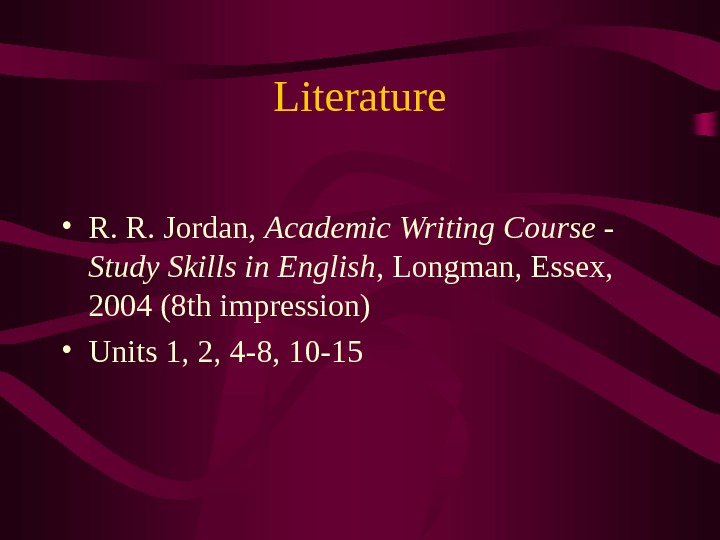
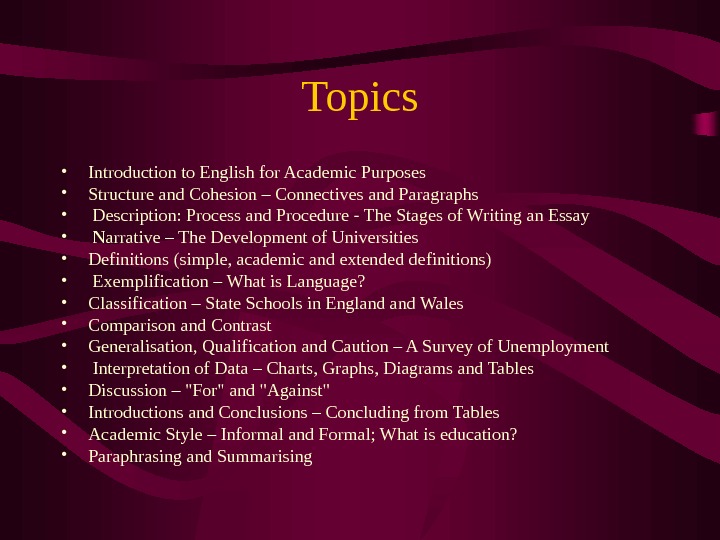
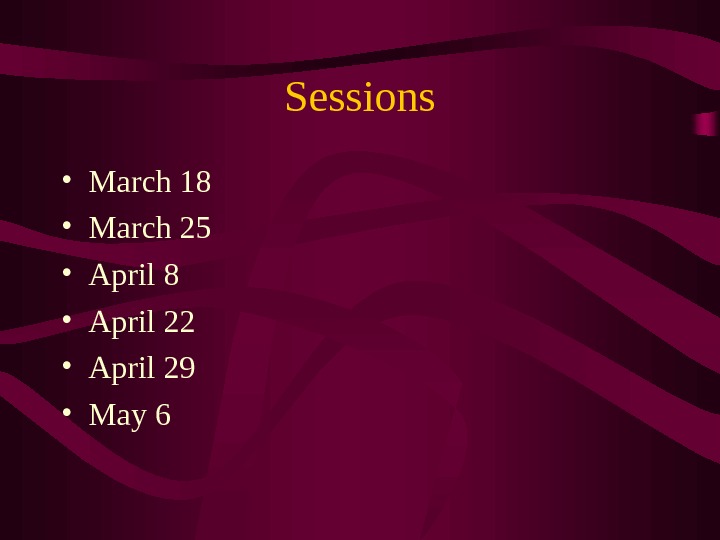

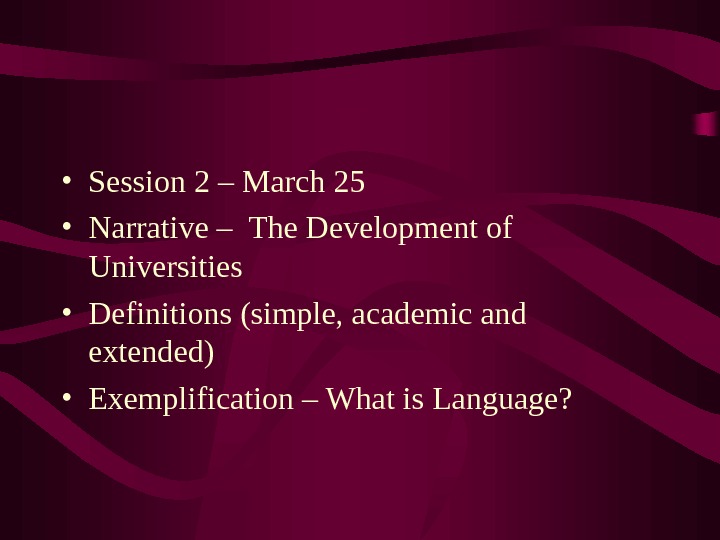

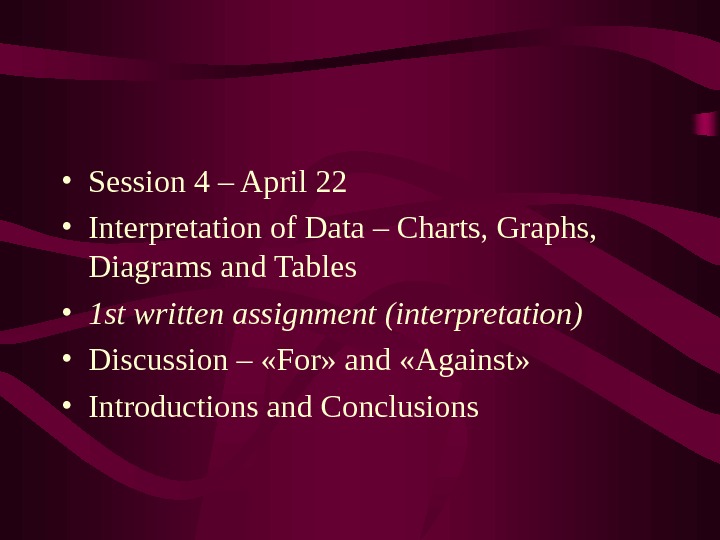
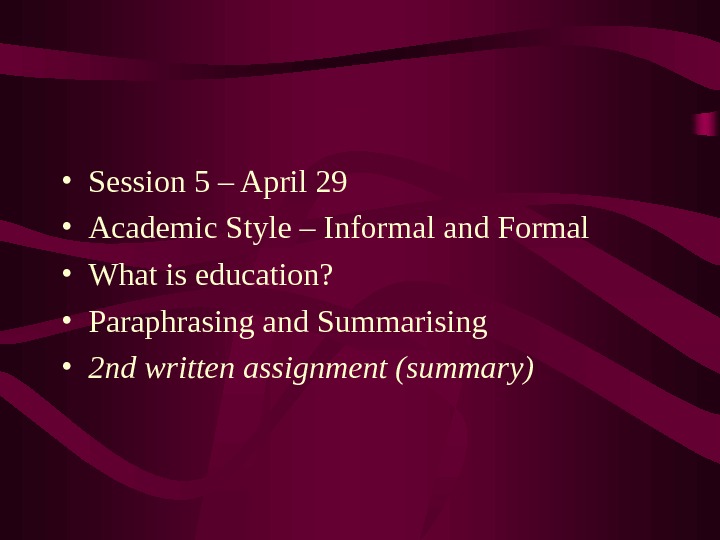

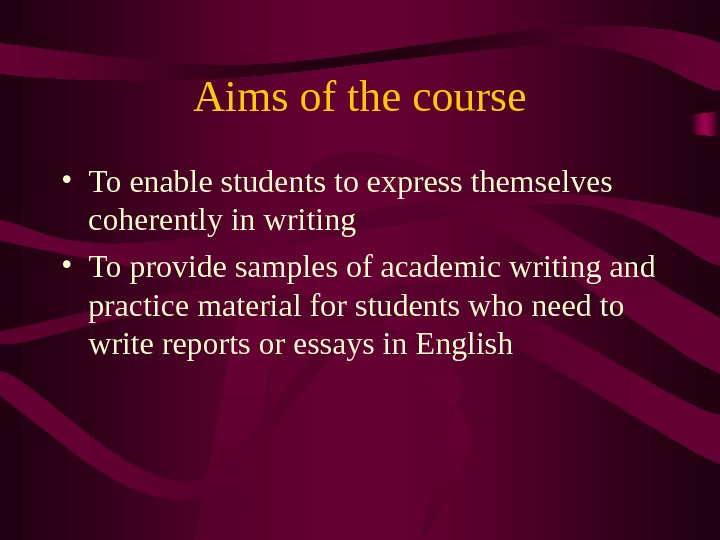
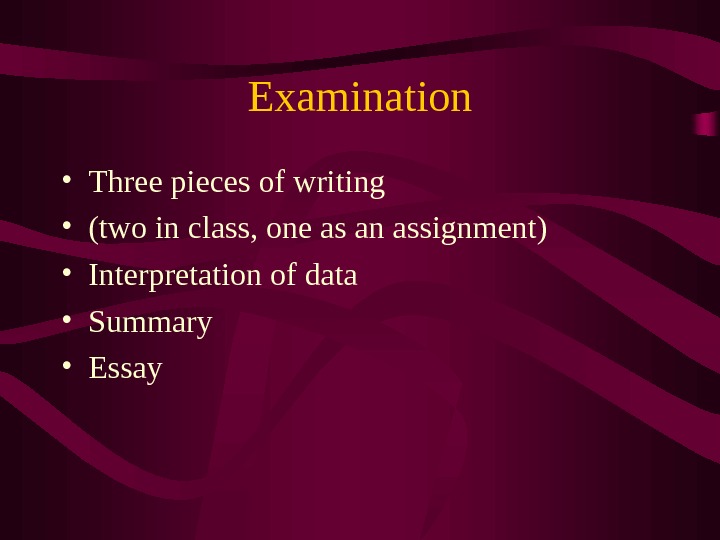
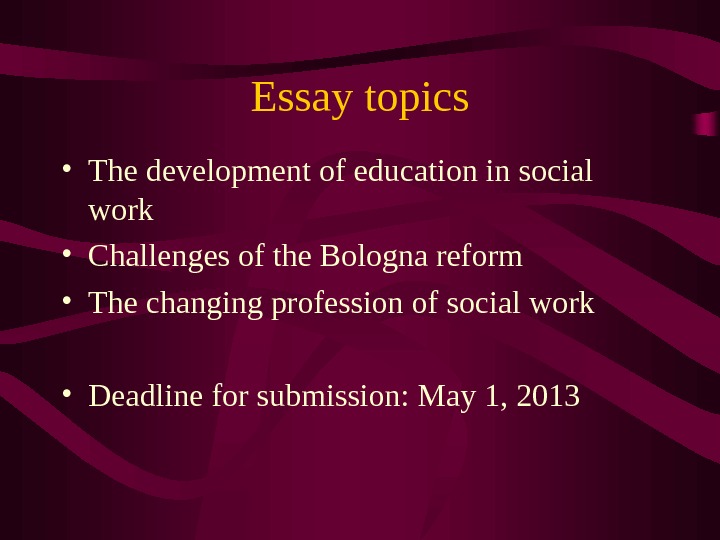

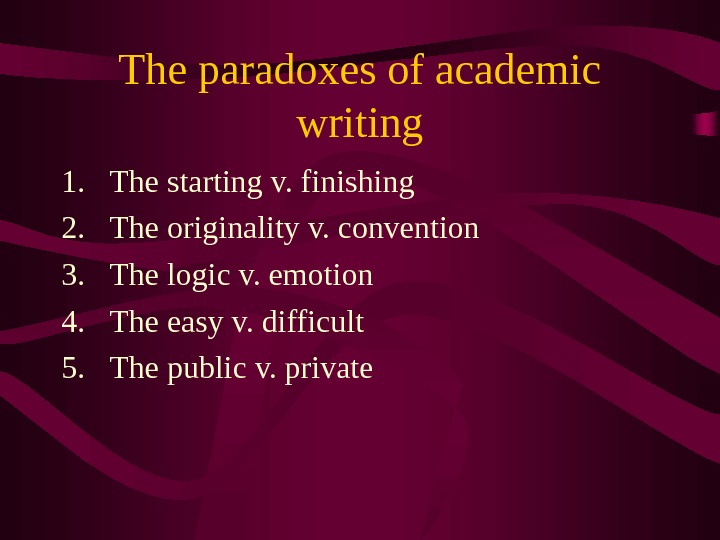
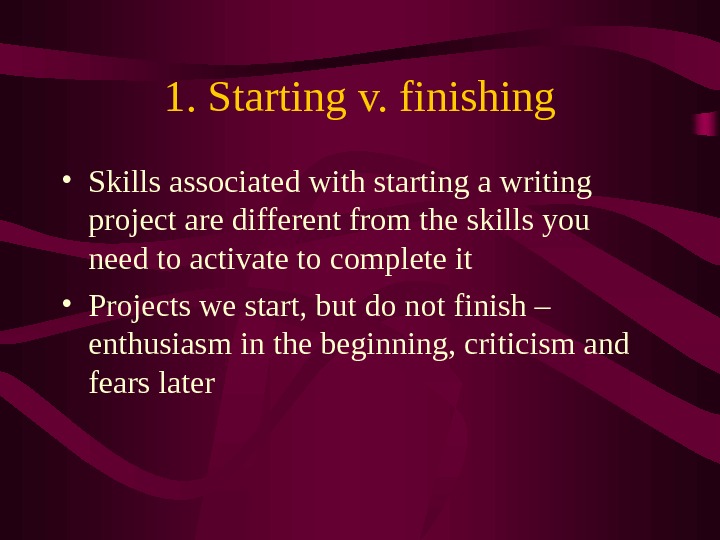
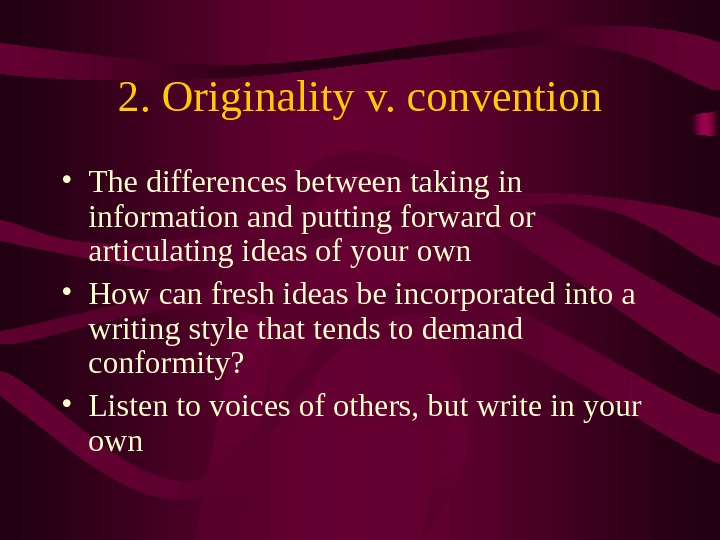

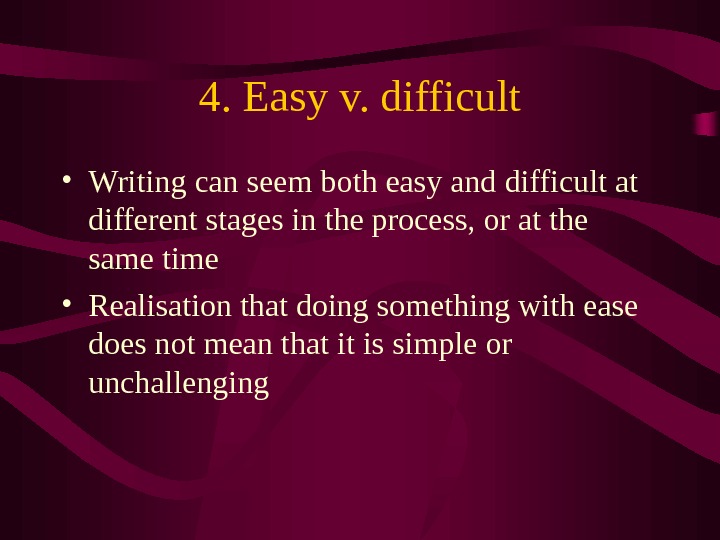


english_for_academic_purposes_-_introduction.ppt
- Размер: 190 Кб
- Количество слайдов: 22
Описание презентации ENGLISH FOR ACADEMIC PURPOSES Elective course English по слайдам
 ENGLISH FOR ACADEMIC PURPOSES Elective course
ENGLISH FOR ACADEMIC PURPOSES Elective course
 English for Academic Purposes • Lecturer: Dr. sc. Marijana Javornik Čubrić • Sessions: Monday 4 -8 p. m. • Office hours: Tuesday 11: 30 -12: 30, Gundulićeva 10, room no. 6 • Contact: marijana. javornik@pravo. hr
English for Academic Purposes • Lecturer: Dr. sc. Marijana Javornik Čubrić • Sessions: Monday 4 -8 p. m. • Office hours: Tuesday 11: 30 -12: 30, Gundulićeva 10, room no. 6 • Contact: marijana. javornik@pravo. hr
 Literature • R. R. Jordan, Academic Writing Course — Study Skills in English , Longman, Essex, 2004 (8 th impression) • Units 1, 2, 4 -8, 10 —
Literature • R. R. Jordan, Academic Writing Course — Study Skills in English , Longman, Essex, 2004 (8 th impression) • Units 1, 2, 4 -8, 10 —
 Topics • Introduction to English for Academic Purposes • Structure and Cohesion – Connectives and Paragraphs • Description: Process and Procedure — The Stages of Writing an Essay • Narrative – The Development of Universities • Definitions (simple, academic and extended definitions) • Exemplification – What is Language? • Classification – State Schools in England Wales • Comparison and Contrast • Generalisation, Qualification and Caution – A Survey of Unemployment • Interpretation of Data – Charts, Graphs, Diagrams and Tables • Discussion – «For» and «Against» • Introductions and Conclusions – Concluding from Tables • Academic Style – Informal and Formal; What is education? • Paraphrasing and Summarising
Topics • Introduction to English for Academic Purposes • Structure and Cohesion – Connectives and Paragraphs • Description: Process and Procedure — The Stages of Writing an Essay • Narrative – The Development of Universities • Definitions (simple, academic and extended definitions) • Exemplification – What is Language? • Classification – State Schools in England Wales • Comparison and Contrast • Generalisation, Qualification and Caution – A Survey of Unemployment • Interpretation of Data – Charts, Graphs, Diagrams and Tables • Discussion – «For» and «Against» • Introductions and Conclusions – Concluding from Tables • Academic Style – Informal and Formal; What is education? • Paraphrasing and Summarising
 Sessions • March 18 • March 25 • April 8 • April 22 • April 29 • May
Sessions • March 18 • March 25 • April 8 • April 22 • April 29 • May
 Timetable • Session 1 – March 18 • Introduction to English for Academic Purposes • Structure and Cohesion – Connectives and Paragraphs • Description: Process and Procedure – The Stages of Writing an Essay
Timetable • Session 1 – March 18 • Introduction to English for Academic Purposes • Structure and Cohesion – Connectives and Paragraphs • Description: Process and Procedure – The Stages of Writing an Essay
 • Session 2 – March 25 • Narrative – The Development of Universities • Definitions (simple, academic and extended) • Exemplification – What is Language?
• Session 2 – March 25 • Narrative – The Development of Universities • Definitions (simple, academic and extended) • Exemplification – What is Language?
 • Session 3 – April 8 • Classification – State Schools in England Wales • Comparison and Contrast • Generalisation, Qualification and Caution – A Survey of Unemployment
• Session 3 – April 8 • Classification – State Schools in England Wales • Comparison and Contrast • Generalisation, Qualification and Caution – A Survey of Unemployment
 • Session 4 – April 22 • Interpretation of Data – Charts, Graphs, Diagrams and Tables • 1 st written assignment (interpretation) • Discussion – «For» and «Against» • Introductions and Conclusions
• Session 4 – April 22 • Interpretation of Data – Charts, Graphs, Diagrams and Tables • 1 st written assignment (interpretation) • Discussion – «For» and «Against» • Introductions and Conclusions
 • Session 5 – April 29 • Academic Style – Informal and Formal • What is education? • Paraphrasing and Summarising • 2 nd written assignment (summary)
• Session 5 – April 29 • Academic Style – Informal and Formal • What is education? • Paraphrasing and Summarising • 2 nd written assignment (summary)
 • Session 6 – May 6 • Revision • Analysis of papers • Signatures
• Session 6 – May 6 • Revision • Analysis of papers • Signatures
 Aims of the course • To enable students to express themselves coherently in writing • To provide samples of academic writing and practice material for students who need to write reports or essays in English
Aims of the course • To enable students to express themselves coherently in writing • To provide samples of academic writing and practice material for students who need to write reports or essays in English
 Examination • Three pieces of writing • (two in class, one as an assignment) • Interpretation of data • Summary • Essay
Examination • Three pieces of writing • (two in class, one as an assignment) • Interpretation of data • Summary • Essay
 Essay topics • The development of education in social work • Challenges of the Bologna reform • The changing profession of social work • Deadline for submission: May 1,
Essay topics • The development of education in social work • Challenges of the Bologna reform • The changing profession of social work • Deadline for submission: May 1,
 Introduction to academic writing • Writing involves starting, progressing and finishing a complicated combination of tasks • Writing is not just influenced by what we know and what we have discovered about something, but also by what we feel • Creative part of writing requires chaos; shaping or writing requires discipline
Introduction to academic writing • Writing involves starting, progressing and finishing a complicated combination of tasks • Writing is not just influenced by what we know and what we have discovered about something, but also by what we feel • Creative part of writing requires chaos; shaping or writing requires discipline
 The paradoxes of academic writing 1. The starting v. finishing 2. The originality v. convention 3. The logic v. emotion 4. The easy v. difficult 5. The public v. private
The paradoxes of academic writing 1. The starting v. finishing 2. The originality v. convention 3. The logic v. emotion 4. The easy v. difficult 5. The public v. private
 1. Starting v. finishing • Skills associated with starting a writing project are different from the skills you need to activate to complete it • Projects we start, but do not finish – enthusiasm in the beginning, criticism and fears later
1. Starting v. finishing • Skills associated with starting a writing project are different from the skills you need to activate to complete it • Projects we start, but do not finish – enthusiasm in the beginning, criticism and fears later
 2. Originality v. convention • The differences between taking in information and putting forward or articulating ideas of your own • How can fresh ideas be incorporated into a writing style that tends to demand conformity? • Listen to voices of others, but write in your own
2. Originality v. convention • The differences between taking in information and putting forward or articulating ideas of your own • How can fresh ideas be incorporated into a writing style that tends to demand conformity? • Listen to voices of others, but write in your own
 3. Logic v. emotion • Academic writers have to be objective, but it is impossible to ignore the emotional dimension • Emotional dimension is needed to be self-aware and reflective in what you write
3. Logic v. emotion • Academic writers have to be objective, but it is impossible to ignore the emotional dimension • Emotional dimension is needed to be self-aware and reflective in what you write
 4. Easy v. difficult • Writing can seem both easy and difficult at different stages in the process, or at the same time • Realisation that doing something with ease does not mean that it is simple or unchallenging
4. Easy v. difficult • Writing can seem both easy and difficult at different stages in the process, or at the same time • Realisation that doing something with ease does not mean that it is simple or unchallenging
 5. Public v. private • Privacy protects early writing efforts, but scholarship in general requires public scrutiny • A need to balance the public and private dimension of academic writing
5. Public v. private • Privacy protects early writing efforts, but scholarship in general requires public scrutiny • A need to balance the public and private dimension of academic writing
 Thank you for your attention!
Thank you for your attention!

